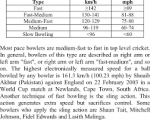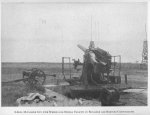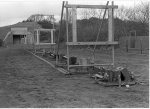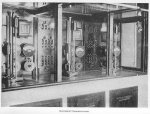However, the big question is….do Barnes, O’Reilly, Chandrasekhar, Kumble, Afridi all fall into the same ‘medium pace’ category as Spofforth, Lohmann, Turner and Trumble?
Can we categorise them as roughly the same
We have seen how sources differ. So do individual batsmen's perception of speed. Hobbs felt more hurried by Johnny Douglas than by Gregory. Not many batsmen would have agreed with him. Old “scientific” estimates of bowlers' speeds should probably be treated with caution. Pelham Warner claimed that Kortright had a “muzzle velocity” of 2,000 feet per second. That is over 1,300 mph!
A purely personal interpretation below. Others may disagree.
O'Reilly, Chandra and Kumble belong in the wrist-spinner category. They may have delivered fairly briskly and bowled the ball into the pitch rather than tossing it above the eyeline, but they were still wrist-spinners.
Barnes was a new-ball bowler who tried to get batsmen caught in the slips. He wasn't as fast as most new-ball bowlers today but had similar ideas. He belongs in a group of English medium-pacers with Tate and Bedser, who all bowled with the keeper standing up (at least in Tests). As he said himself, Barnes' methods were closer to Bedser than Tate, who was more like a modern seamer. Barnes' “leg-break” and Bedser's “leg-cutter” may have been the same delivery.
Spofforth attacked the stumps. Batsmen may have anticipated something fairly quick and were often surprised by slower balls. He was basically a fast-medium bowler who brought the ball back off the pitch. So was Turner.
Trumble was what we would now call an off-spinner. He was termed medium-pace but wouldn't be today, using flight and varying his pace. From some descriptions of the time Lohmann appears similar. Both specialised in “caught and bowled”, a classic spinner's dismissal. WG thought Lohmann was quicker and he did have a sharp quicker ball.
When Peel pushed the ball through on a turning pitch he was sometimes referred to as a medium-pacer or a length bowler. Today we would recognise him as a normal left-arm spinner.





